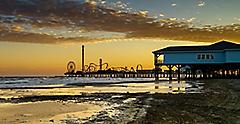You might find yourself surprised by how and why ranching came to be so popular in Texas, and what the daily life of a rancher looks like, even in the modern-day. While technology has made ranching a more precise and efficient occupation, it's still a labor-intensive one that demands dedication, particularly given the challenges of climate change.
If you have the opportunity to visit a ranch the next time you're in Houston, you can get an even more intimate glimpse into this rich and important American tradition. Some Texas ranchers even have their own B&B-style accommodation, unlocking opportunities for even deeper immersion.
Who Were The First Texas Ranchers?

The history of ranching in Texas actually stretches back further than modern Texas, or even the United States. Specifically, it began in the early 1700s, when "Tejas" was simply a province of the New Spain colony. Spanish colonial leaders, seeking to block the westward expansion of settlers from New France, established a number of missions in what is now the state of Texas.
It's not surprising, given that these missions needed meat, milk, and leather, that thousands of cattle resided here alongside the people. What is a shock to some people is who the first ranchers were: They were Franciscan priests, at least initially. At some point, the soldiers quartering in the missions took over the ranching duties.
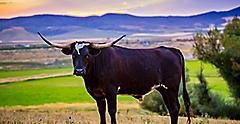
Over time, the soldiers proved unable to take care of the cattle, which grew in number and began roaming into the deserts of modern-day west Texas. The private settlers on these lands that sought to claim these cattle for themselves became Texas' first cowboys. They literally had to lasso the cattle, round them up and take them back to their ranches.
From the time of the Franciscan priests, all the way until Texas became a state in the mid-19th century, these cattle quickly became a valuable commodity. Even in the years before automobiles, ranchers would take them as far east as New Orleans to cash in on their assets, which became an early engine of Texas' now-famous economic prosperity.
The Life Of A Texas Rancher
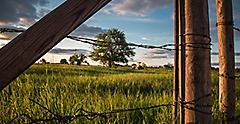
Rancher Vs Farmer
So what do ranchers do today, now that the west is less wild while meat, milk, and leather production has been industrialized? While technology has made many ranchers' duties easier and faster, the fundamentals of running a ranch are largely the same as they were hundreds of years ago.
Throughout Texas rancher history, the key to success has been not only caring for the cattle and other animals that live on the ranch yet fostering a hospitable farm for them to live on. This includes keeping the grass they eat watered and green and maintaining pens, fences, and other structures on the property. There's also the issue of tending to whatever crops a given rancher grows throughout the various seasons.
Traditionally, the women of the ranch were responsible for keeping the residence of the ranch clean and comfortable, as well as preparing meals for the men and boys. However, it isn't uncommon for women to assist with certain tasks around the farm according to their interests. As you can imagine, women perform a much greater share of ranching duties these days than they did even a few decades ago, although it's still a very male-centric profession.
Compounding the task of ranching has been climate change, which has led to hotter, dryer, and longer summers, warmer winters, and general unpredictability when it comes to the weather. Ranchers are in many ways the first line of defense against climate change and experience it much more acutely than ordinary people.

Ranching: The Daily Family Affair

The good news? You can become a rancher even if you don't have a cattle ranch or aren't from Texas. These days, local ranches are important sources of employment and commerce in their communities, from young people who work as part-time ranch hands during their summer breaks to full-time staff hired locally and other businesses that provide contracted service to ranches.
Now, getting a job or volunteering on a ranch is very different from actually becoming a rancher. It would take years of experience in order to own and operate a ranch yourself, even if you had the assets to purchase an already-established ranch. Ranching is not just work. For ranchers, it's their life!
Texas rancher history has largely been a history of families. When the first cowboys rounded up all the feral cattle the Spanish colonists had left in their wake and began establishing modern Texas' first permanent farms, the farmhands were mostly the rancher's own children. Many of these children learn the trade in preparation for one day taking over the ranch themselves. By the time kids were of typical working age, they'd already had a decade or more experience working on the ranch under their belts, leaving them well-equipped to take the reins (pun very much intended).
As a result of this, many Texas ranchers retain a deep emotional attachment to their ranches, a strong respect for the land and a great sense of pride in their work. Just as the ranch is more than a symbol or trope by which Texas has come to be defined, it's more than a source of economic sustenance for ranchers — it's family, heritage, identity and community.
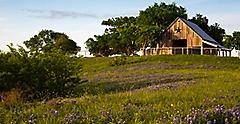
Texas Ranching Is Quintessentially American
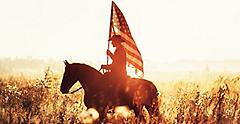
Cowboy Vs Rancher
In the 19th and early 20th centuries, Texas beef was primarily a hot commodity within the U.S. and the preferred ingredient for burgers and steaks for American diners. These days, the U.S. is the largest producer of beef in the world, with more than 15% of that beef coming from the state of Texas. Texas cattle — and, therefore, Texas ranchers — are likewise indispensable to American dairy and leather industries.
Within Texas, ranching has also contributed to various cottage industries, most notably the rodeos and other fairs that pop up around the state throughout the year. The most permanent example of this legacy exists within the old-timey Stockyards area of Fort Worth, just west of Dallas. The annual Houston Livestock Show and Rodeo, meanwhile, takes place for about three weeks in late February or early March. As the world's largest livestock show, the event hosts concerts, food trucks and all kinds of other festivities, and even provides scholarships for a large number of Texas students.
Beyond the economic boon that exists now, ranching is an important part of Texas and its culture. The Texas longhorn cattle, for example, is the mascot of the University of Texas at Austin, one of the most recognized American universities around the world. Cowboy imagery is one of America's most famous cultural exports as well, going all the way back to the days when it was romanticized in old Western films.
Combined with other Texas economic juggernauts, like Houston's oil industry, the Dell computer company, and NASA — to name just a few — cattle ranching is central to Texas' brand. Since Texas is among the most well-known of all American states, you could say that cattle ranching in Texas has gone in 300 years from a colonial pastime to a symbol of the economic powerhouse that is the U.S.
Pull On Your Boots, And Visit A Texas Ranch In Galveston

Things To Do On Texas Ranch
If you're planning a trip to Texas, it's easy to incorporate a visit to a Texas ranch into your itinerary. While many popular ranches are located in the town of Bandera — sometimes known as the "Cowboy Capital of the World" — in the Texas Hill Country, just a few hours west of Houston by car, there are also a number of ranches in the Houston metropolitan area.
George Ranch, which is located in Richmond about an hour southwest of Houston, offers guided tours of its historic property. Four generations of the family who run the ranch still live there, so you'll be guaranteed a lot of interesting anecdotes and stories in addition to the lengthy history. Old MacDonald's Farm (yes, that's the real name) in Humble has a petting zoo that's made it popular for families with kids, and while adults may still find it interesting, the focus is less on cowboys and more on the cows.
For the most authentic and immersive Texas ranch experience, your best option is to drive to Bandera. It's a bit of a trek, at nearly four hours west of Houston, but if you can spare the time, it's well worth it. Ranches like West 1077 and Mayan Dude Ranch offer B&B-style accommodations and a wide range of activities. If you plan on taking a cruise out of Galveston, for instance, you might build a couple of days after your trip into your itinerary, and arrange to spend a few nights on one of these ranches.
Whether you want to enjoy leisure activities like kayaking and biking, indulge in the local farm-to-table cuisine, volunteer alongside the ranch hands at the crack of dawn, or get up on a horse yourself, this region of Texas has something for everyone. No matter what you end up choosing, visiting a ranch provides a unique and priceless insight into the life and legacy of a Texas rancher.

Get Royal Deals, Sign Up Today

Getting There
Explore Our Most Affordable Itineraries
Now that you've brushed up on your Texas rancher history, why not put it into practice while cruising from Galveston, Texas.





